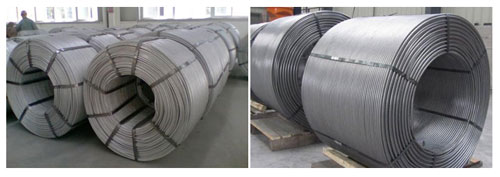
When you think of welding powder, you probably do not picture calcium aluminates. However, these are important components of welding powder because they are used in steel smelting processes. In this article, you'll learn about the Molecular Structure of calcium aluminates and their chemical reactions with molten steel. In addition, you'll learn about the applications for CaSi alloys in steel smelting.
Calcium aluminates are a group of minerals formed from combining aluminium oxide and calcium oxide. They are common components of refractories, cement, and steel. Of the different calcium aluminates, one known as pentacalcium trialuminate has an orthorhombic crystal structure and a density of 3067 kg/m3. Another form, called tetracalcium aluminate, is a metastable phase that is formed by dehydrating calcium oxide.
These refractory materials are synthesized from aluminum dross and sludge. Li et al. also synthesized high alumina refractory materials using aluminum dross. Their findings suggest that calcium aluminates are useful for steelmaking and other applications. Calcium aluminates can also be used in the production of heat-resistant cement.

The main reason for the use of solid calcium metal cored wire in steel smelting is to improve calcium metal yields within the molten steel. It is also used for deoxidation and desulphurization, and as a form of inclusion modification. The wire is relatively low density compared to conventional CaSi Lumps.
The time required to modify CA into C12A7 inclusions is related to the Ca content in the molten steel. When the Ca content is low, the time needed to modify CA into C12A7 inclusions increases. The same process is reversed for high-quality steel. It takes two to three times more time for a high-quality slag to reach its final composition.
CaCO3 is an important chemical component in the production of steel, used in the ladle furnace and for desulphurization. It is a highly reactive slag, saturated with lime, and produces steel with optimum desulphurization properties. The chemical is also useful for production of certain steel grades, such as heavy plates and hydrogen-sensitive steel. It is produced in the form of a liquid top slag (REFRAFLUX(r) S), and can also be granulated and sintered according to customer specifications.
Calcium aluminates are produced as briquettes or pellets. Their properties allow them to be used as auxiliary materials in steelmaking, and they can reduce the costs of high-grade steel. Calcium aluminates can also reduce erosion of ladle linings and speed up secondary metallurgy processes. In addition, they can be produced with high-quality components and can be used in non-hydraulic systems.
Inert gas welding is a common application for CaSi alloys. These powders can be deposited on a variety of surfaces to create a permanent, corrosion-resistant bond. This alloy is highly ductile, resulting in excellent weldability. In addition, it is an excellent choice for coating steel surfaces that are prone to corrosion. In welding, the powders used are typically used at temperatures between 250°F and 450°F.
For the most reliable weld, CaSi alloys should be chosen. Besides being a good choice for welding, they are also very strong and should not be mixed with other metals. Hence, choosing the right type of powder is essential for the proper welding application. A good powder will increase the bonding strength between the base metal and the welding alloy. Welders should always select powders that match the base metal and welding alloy properties.

Write a Message